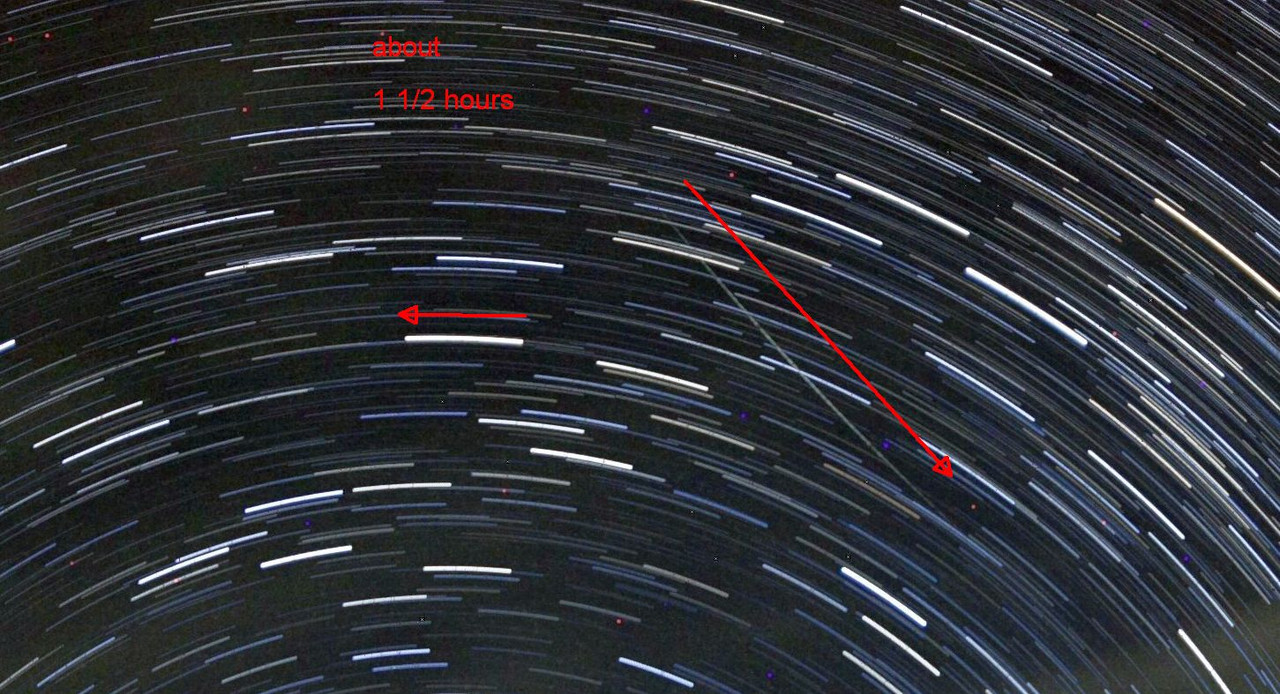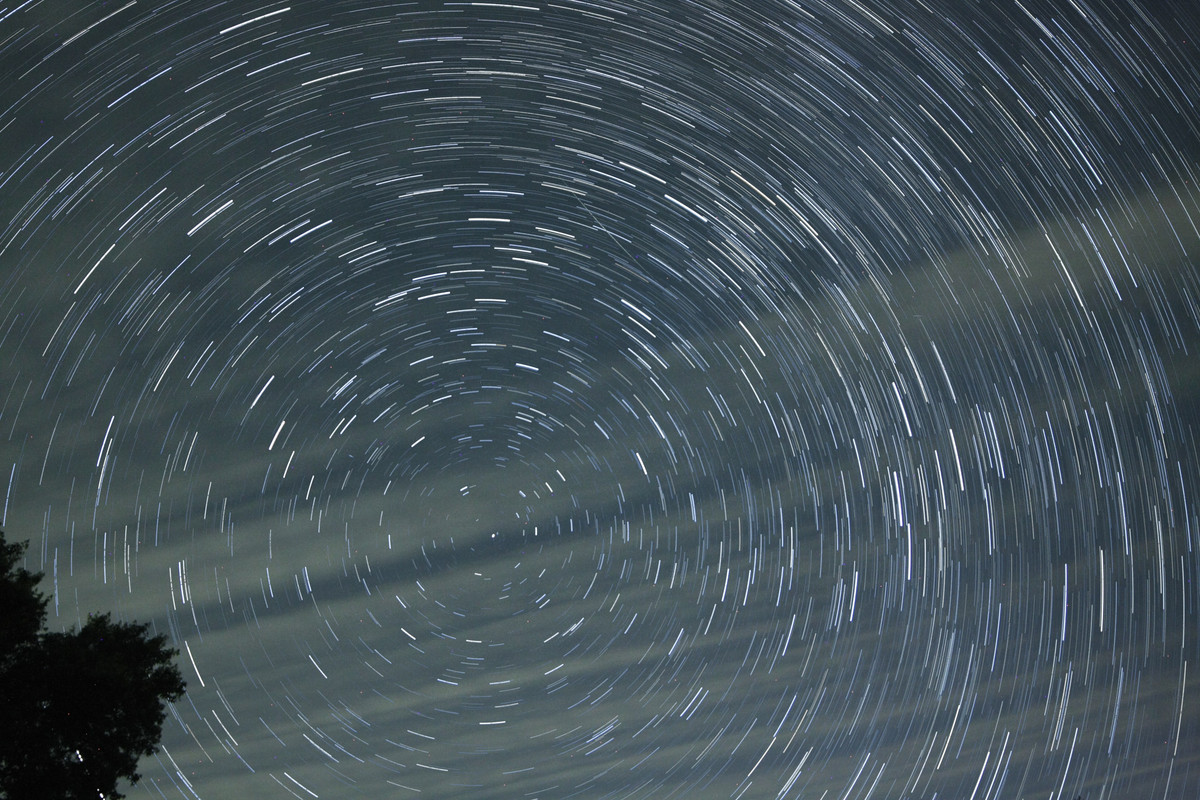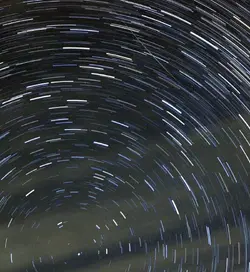Maybe it got lost in all the posts of how the image was made. The images I make are taken one every 20 seconds. I start the camera around dusk and let it run, until Sunrise. Sometimes I use 30 seconds.
Look at the first posts where you asked the same question and I answered.
Meteor.
It didn't take that long for it to create that streak in the image. Likely, just a few seconds at most.
I look at the files, which have the time included, and it was 76 images from the first image to the last, that included the object. It took about half an hour for the 76 images used, which were made into a composite image. If I post a single image, it's just a dot, without any reference.
See the streaks, those are stars, which all move the same direction. The star trails took 90 minutes for the stars to move that far.
I can't link self hosted images anymore here for some reason.
The first frame is 2022 0627 at 00:46:50 and the last one it appears in is 01:13:42 I must have used the entire time of the sequence. The object crosses against the natural revolution, moving the wrong direction. It took 28 minutes, which was frames 7512 to 7588. While every frame is 20 seconds, there is camera processing time involved. They come out around 22 seconds in this case.
01: 13:18 is #7587, 01:13:42 is #7588 and that's 24 seconds, it's not a stop watch, and when there are more frames and depending on how light they are, the processing time varies.
Short version of all of that, about a half hour sequence, which was overlapped using startrails.de into one single image, with the track of the mystery object crossing in the NE sky.
ps the red dots are hot pixels. Canon 40-D set to 20 seconds, ISO 1600, manual focus, I'd have to look at my notes as the F/stop is also manual. Probably f/4







![[No title]](/data/xfmg/thumbnail/31/31039-558cdb3d311dc67b7a2134527e230488.jpg?1734159138)






![[No title]](/data/xfmg/thumbnail/37/37526-bc41ead4d3f2330d3e37da95abf9132e.jpg?1734170685)
![[No title]](/data/xfmg/thumbnail/37/37522-f67b10bc5ee534f9bc21ee94917445b9.jpg?1734170682)
